Overview: Digital Transformation
Digital transformation is an over-used, over-abused term. Here’s what it means to me.
From many strategies ...
In most organisations, the following strategies are barely on speaking turns, let alone fully integrated and mutually supportive:
- Internal communication: Every day, valuable ideas and information pour into your organisation as staff engage with stakeholders and discover useful knowledge online. But what happens then? If a piece of knowledge is valuable to them, it's probably also useful to their colleagues ... so why does so little of it circulate within your organisation?
- Internal collaboration: Are your staff still emailing documents to each other, and spending hours tracing the latest version and integrating changes?
- Knowledge management: Can your staff find the knowledge they need efficiently, share information effortlessly without flooding everyone’s Inboxes, and serendipitously discover relevant information around the digital equivalent of the office watercooler?
- External communication: There is no better advocate for any organsation than empowered staff and engaged audiences. Have you transformed your workforce into Social Ambassadors, and launched communities to engage your customers and stakeholders in co-defining the future?
- Training and employee engagement: Even if you have the tools, can your staff use them? Do they know why they should?
... to one strategy: build an internal innovation community
How can you integrate the above strategies, processes and tools? By treating them as different aspects of one, overarching goal: the creation of an internal innovation community throughout your organisation.
everyone is trained and motivated to share knowledge internally and externally, supported by efficient tools and processes
The idea is to frame the above strategies, processes and tools as interconnected tactics within an overall strategic framework. This aligns them to a shared set of goals: an organisation where everyone is trained and motivated to share knowledge internally and externally, supported by efficient tools and processes for knowledge management, internal and external communications.
From Strategy to Implementation
Having such a strategy is all very well, but noone will notice if you never implement it. You'll need to plan for unknowns, coordinate experts who have never worked together before, and integrate project and change management so that:
- change rolls out with the new features, tools and processes,
- these are developed with your staff, not foisted upon them.
I’ve specialised in the intersection of internal and external communications, collaboration and knowledge management since 1995. If you need help, get in touch.
More services: start with Communication strategy.
Relevant resources
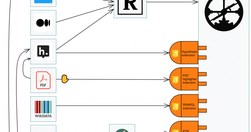
A "How I use it" from Ivo. "Roam changed the game [by] ... treating the data as a graph ... [and] allowing blocks to quickly be nested, referred to, embedded, created from a piece of text in a block, appear in the sidebar, being searched and queried".Ivo developed a way of ontologising his Roam graph: "In the context of a…
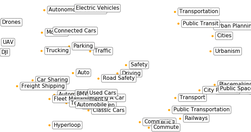
there are big issues with tags that limit their usefulness... tags are scattered... over 1 million unique tags. Many ... duplicates ... or so close that they have the same audience... represent each tag by a vector of numbers in a multi-dimensional vector space...find the meaning of these thousands of tags in a way that can represented by vector…

If you’re in the market for an off-the-shelf text analytics API, you have a lot of options. .. go with a major player ... or a smaller provider that focusses on text analytics ... we look at what the most prominent software giants have to offer ... there are now at least a couple of dozen APIs ... The granularity of IBM’s categories is striking...…

Free Software for your own Search Engine, Explorer of large document collections, Media Monitoring, Text Analytics, Document Analysis & Text Mining platform based on Apache Solr or Elasticsearch ... and Open Standards for Linked Data, Semantic Web & Linked Open Data integration

Imagine that we have heard the sentence “The dog chases the cat” several times, but we haven’t ever heard the sentence “The cat chases the mouse”. As soon as we hear it, we infer that cats do some things similarly to dogs: at least they also chase. But we know even more: we also know that “cat” have the same syntactic behaviour in the latter sente…
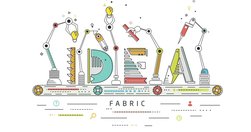
When a Vox Media Slack user sends a direct message to simbot specifying a seed article URL and a number of desired results, then the bot would return a ranked list of articles that are most similar in content to the article found in the provided URL. two main applications for the bot ... enable editors ... on social media... to discover related…
The main Topics this time are language technology, mobile innovation and EU communications, with a few extras to catch-up since the last edition.
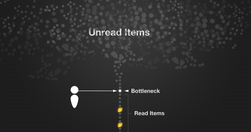
There is no shortage of content aggregators and aggregators of aggregators... give us a better overview of all the sources of information we have subscribed to and found ourselves now depending on... Constantly checking our feeds for new information, we seem to be hoping to discover something of interest, something that we can share with our ne…

"Our Analysis APIs analyze text or web pages, extracting metadata and classifying with topics (Functional Programming, Celebrity Gossip, or Hotels) and aspects (review, news, product, video). Analysis APIs can be used to label and organize content, recommend similar content or to build rich user profiles that enable personalization."

"the impact of IoT won’t be the Things, it will be the way the data can be analyzed to shape downstream innovation.... data from the highway department ,,, perfectly predicted the housing boom and bust, with an approximately six month lead time." - Trawling with Engines of Meaning — Work Futures — Medium

"Machine learning can help by finding those hidden patterns you probably didn’t even know existed, so you can tune your marketing campaigns accordingly.... DataPop relies on semantic search and natural-language processing to infer connections between what consumers enter into the search window and what they really want, and then on machine learn…
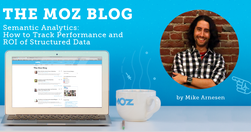
"Through applying semantic markup to our site, we've embedded an incredibly rich layer of meaningful data in our code.... but don't let the search engines have all the fun; we can use that data, too. By looking at the semantic markup on any given page, we can see what type of "entity" we're looking at ... and its attributes or properties. If we c…

"These APIs will usually take text in the form of a file or URL, and ... identifies the topic of the text you submit, and/or finds “named entities” in the text.... include people, places, organizations, nations... Given that there are several APIs that offer similar services, how can we (and you) choose between them?" - Semantic APIs, what to co…
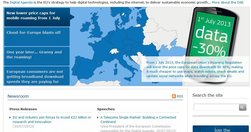
The first site launched (in 2011-2012) on the EC's Multisite Drupal7 Platform, thus pioneering EC Drupal Platforms in terms of technology, user requirement defitinition and governance.